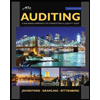
Concept explainers
a)
To discuss: Meaning of business risk, capital structure and financial risk.
a)
Explanation of Solution
Capital structure is the combination of debt and equity. Through capital structure it is decided that how much leverage ratio has to be maintained and company decides which sources it will get money and how much volume.
Business risk refers possibility of occurrence of loss due to changes in government policy, taste and preferences of customers that will leads to affect the factors like sales volume, sale price and sales per unit.
Financial risk is the risk where various types of risks associated with this like default risk, in which company sold out item in credit to customer, if customer default in payment or increased the time limit of payment of his cash which ultimately increase the financial risk.
Financial risk might arise due to foreign investment wherever the possibility of risk is higher.
b)
To discuss: Meaning of operating, financial leverages and break-even point.
b)
Explanation of Solution
Operating leverage: It is nothing the degree of change in operating income for percentage change in sales. It is nothing but the ratio of contribution to operating income.
Financial leverage: It is nothing the degree of change in total debt to shareholder’s equity.
Break-even point: It is point where, company has no profit no loss. At break-even point all fixed costs are recovered. It is calculated by using the formula,
c)
To discuss: Reserve borrowing capacity.
c)
Explanation of Solution
It is the capability that company maintains or reserve for future borrowings at the time of good investment arises. Banks are needed to keep cash for uncertain liability and likely the company maintains a reserve borrowing capability to satisfy sensible investment or uncertain liability arises.
Want to see more full solutions like this?
Chapter 16 Solutions
INTERMEDIATE FINAN.MGMT.(LL)-W/MINDTAP
- Please provide the correct answer to this financial accounting questionarrow_forward(Calculating annuity payments) The Aggarwal Corporation needs to save $8 million to retire a(n) $8 million mortgage that matures in 17 years. To retire this mortgage, the company plans to put a fixed amount into an account at the end of each year for 17 years. The Aggarwal Corporation expects to earn 12 percent annually on the money in this account. What equal annual contribution must the firm make to this account to accumulate the $8 million by the end of 17 years? The equal annual contribution Aggarwal must make to this account is (round your answer to the nearest cent) $arrow_forwardWhat is EBITDA, and why is it often used as a proxy for cash flow?arrow_forward
 Intermediate Financial Management (MindTap Course...FinanceISBN:9781337395083Author:Eugene F. Brigham, Phillip R. DavesPublisher:Cengage Learning
Intermediate Financial Management (MindTap Course...FinanceISBN:9781337395083Author:Eugene F. Brigham, Phillip R. DavesPublisher:Cengage Learning Intermediate Accounting: Reporting And AnalysisAccountingISBN:9781337788281Author:James M. Wahlen, Jefferson P. Jones, Donald PagachPublisher:Cengage LearningPrinciples of Accounting Volume 1AccountingISBN:9781947172685Author:OpenStaxPublisher:OpenStax College
Intermediate Accounting: Reporting And AnalysisAccountingISBN:9781337788281Author:James M. Wahlen, Jefferson P. Jones, Donald PagachPublisher:Cengage LearningPrinciples of Accounting Volume 1AccountingISBN:9781947172685Author:OpenStaxPublisher:OpenStax College
 Auditing: A Risk Based-Approach to Conducting a Q...AccountingISBN:9781305080577Author:Karla M Johnstone, Audrey A. Gramling, Larry E. RittenbergPublisher:South-Western College Pub
Auditing: A Risk Based-Approach to Conducting a Q...AccountingISBN:9781305080577Author:Karla M Johnstone, Audrey A. Gramling, Larry E. RittenbergPublisher:South-Western College Pub





